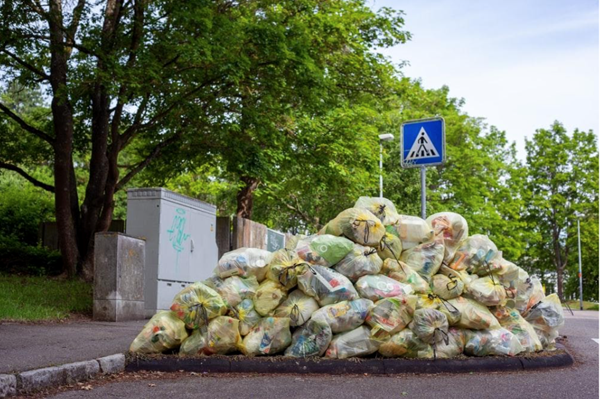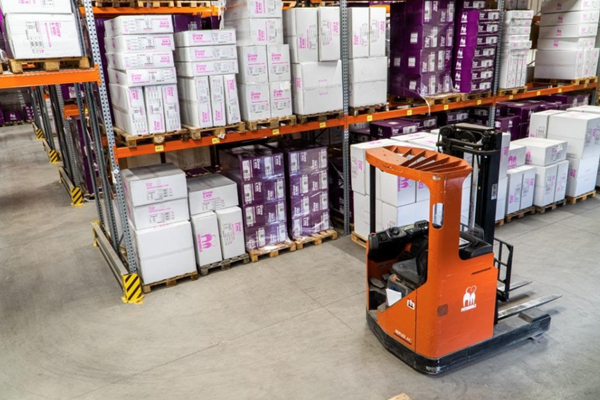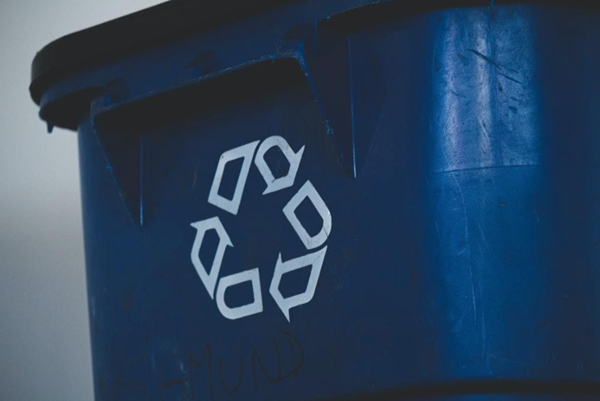As demand for food manufacturing has increased around the globe due to a rising population, it has led to a proportionate increase in the amount of food waste as well.
In fact, the United Nations’ Food and Agriculture Organization estimates that the food waste produced around the world is enough to feed almost 2 billion people in a year. Each year, food manufacturers throw away billions of kilograms in food waste. As awareness continues to spread regarding the inefficient use of resources and the sheer amount of waste that is produced in the food manufacturing industry, a number of organizations have begun to pressurise corporations to reduce their waste footprint.
By 2050, it is expected that the global population will hit the 9 billion mark, with food demand increasing by almost 77%. During this period, food production shall be under various threats, including competing land use, climate change, and above all, increasing scarcity of clean water.
How Bad is the Food Waste Problem in Australia?

In Australia, more than 4.2 million tonnes of food waste are disposed of in landfill every year. Almost 36% of this is food waste produced from the commercial and industrial sectors. The rest (2.7 million tonnes) is discharged from households. This puts a burden of almost $10.5 billion in lost product and waste disposal costs.
While a high percentage of waste in food manufacturing can simply not be avoided, almost 90% of it is recovered as compost, energy, or recycled for use as animal feed. Foodservice activities (waste from cafes and restaurants), makes up more than 661,000 tonnes of food waste from the entire commercial and industrial sector.
When food is wasted, all of the resources that were invested in manufacturing are also wasted. This includes loss of energy, water, synthetic and natural materials, as well as the use of land.
To put things in perspective: if action is not taken now to reduce food waste, it could lead to severe shortfalls in supply, while demand continues to increase. More importantly, the environmental impact is going to be nothing short of disastrous, eventually paving the way for famines, destruction of natural resources, an increasing death toll, and dramatically increasing prices of food staples.
The Main Reasons for Food Loss and Waste in Australia
Food waste occurs throughout the supply chain, starting from the point of production all the way until it is consumed. Understanding the main reasons for food waste at each point is the first step to mitigating the food waste problem.
Loss During Agricultural Production
Crops are lost during agricultural production due to a variety of reasons, such as:
- Unsuitable weather conditions
- Crop diseases or pest infestations
- Failure to meet quality standards
Storage and Handling Post-Harvest
Post-harvest, the crops are generally stored in warehouses and inspected further to ensure they meet quality standards. Loss due to spillage, pests, or poor crop quality could increase the food waste at this stage.
Packaging and Processing
The main reasons for food waste during this stage include:
- Trimmings and waste during food preparation
- Waste on the production line
- Reduced shelf life
- Mistakes during batch processing
Distribution
A considerable amount of food waste occurs during distribution, in both the wholesale and retail sectors. The main reasons include:
- Damage in transit or in storage
- Spoilage
- Fresh produce damaged due to improper handling
- Food wasted due to low sales
Food Service
As mentioned earlier, food service activities result in the highest amount of food waste out of all these stages. This occurs due to:
- Poor handling
- Trimmings and waste during preparation
- Confusion over best-use or expiration dates
- Plate leftovers
Home
Food is lost at home due to:
- Discarded due to expiration
- Food leftovers
- More food prepared than necessary
- Spoilage
On average, Australians waste about 300 kg per person, per year. In total, the economic impact of food waste across all stages of the supply chain is around $20 billion a year.
Steps Taken by the Australian Government
In keeping with the Sustainable Development Goal 12.3 of the United Nations, the Australian government has pledged to reduce its food waste by half till 2030. The government has laid out comprehensive plans for dealing with the food waste problem, and steps have been added in the National Waste Action Plan as well as the National Food Waste Strategy.
The government has established Stop Food Waste Australia with a $4 million upfront investment. It launched in 2020 with the sole purpose of delivering on the National Food Waste Strategy’s pledge. The organization shall focus on implementing the Australian Food Pact and introduce initiatives to reduce food waste.
The Australian Food Pact is a voluntary agreement that helps connect organisations throughout the country to work on reducing food waste across the supply chain and utilize resources in a more efficient manner.
The government is also working on a plan to divert food resources that would otherwise be wasted towards Australians who do not have adequate food access, which is almost 20% of the population. Education and awareness campaigns are also being launched to make the public aware of the sheer impact of food waste across the country.
More importantly, significant investments are being made in agricultural efficiency and production, the national waste treatment infrastructure, and procedures that could maximize recyclable waste and reduce the amount that makes it to the landfill.
5 Effective Ways to Reduce Waste in Food Manufacturing
Food waste is a serious problem, and it will continue to get worse if steps are not taken for dealing with the issue. Thankfully, company owners and factory managers can take several steps to reduce the amount of food that’s wasted during manufacturing. Here are 5 effective ways to do so.
1. Optimizing Product Packaging

A majority of the signatories to the Australian Packaging Covenant are looking at different opportunities to reduce the harmful environmental impact of their food packaging. The best way to do this is to get rid of lightweight components used in packaging.
Fit-for-purpose packaging not only reduces waste but also trims costs. However, a balance needs to be maintained in the weight of the package; if it’s too light, it may compromise the integrity of the package in transit.
More importantly, there are now increased opportunities for businesses to buy semi-processed or pre-packed products, as that could help cut down on waste during the food preparation stage.
Despite the fact that the majority of opportunities for reducing food wastage in the services sector are primarily due to a change in behaviour, manufacturers could reduce their waste by opting for pre-prepared ingredients, such as cut vegetables.
The use of packaging materials that extend shelf life could also help cut down waste dramatically. New technologies, such as “active” packaging, are already quite popular and respond to the conditions in which the product is kept.
From a purely cost perspective, protecting foods such as meat, dairy, or fish is essential. Modified atmosphere packaging, for instance, could be used to increase their shelf life considerably.
Other packaging technologies that could extend shelf life include:
- Multi-layer packaging
- Edible coatings
- Ethylene scavengers
- Aseptic packaging
- Moisture absorbent packaging
2. Improved Inventory Management

While intelligent packaging solutions are a good initiative, improved inventory management can further cut down on food waste across the supply chain. By accurately estimating the amount of raw material used in the manufacturing process, manufacturers can reduce the amount of waste produced.
A major contributor to food waste is the excess raw material that’s discarded during the manufacturing process. As businesses move towards streamlined inventory management models infused with technology, waste due to improper inventory management is only expected to decrease.
Businesses should only order the quantity of raw material they require, and carefully estimate its shelf life, and their production capabilities. As improved forecasting models are made available, businesses will find it easier to trim food waste due to excessive inventory orders.
3. Make Recovery and Recycling a Priority

A significant amount of waste can be recovered from both onsite and offsite locations. This can be done using techniques such as:
- Reverse osmosis
- Centrifugation
- Electrolysis
The food recovered could be used for other applications. For instance, food waste composting is a great way to utilise organic waste for improving agricultural practices. Recycling is another popular way to reduce waste. Many materials like wood, asphalt, paper, and plastics can be recycled and shredded.
However, for efficient recycling, steps must be taken to ensure that the recycled materials are appropriately sorted and sold to the right companies. This not only reduces energy consumption, but the government has also introduced several benefits for companies that make recycling a priority.
Recycled waste can also be exchanged with other businesses.
4. Setting SMART Waste Reduction Goals

Organisations cannot achieve 100% efficiency in food recycling. It requires a significant amount of planning and comprehensive audits of the inventory management system, the production processes, and the overall supply chain.
Volume reduction targets could be set to determine the amount of non-hazardous waste material that is recycled by the company. As the recycling process becomes more and more efficient, these targets could be increased.
A budget must be defined for meeting waste reduction targets, and a company-wide review should be conducted to determine the production stages where the highest amount of waste occurs. A comprehensive audit should be conducted annually to determine whether the organisation is able to meet its targets or not.
Any roadblocks identified should be listed as well, with records reviewed on a regular basis. Waste reduction efforts or innovations by employees must also be rewarded.
This step requires a paradigm shift in the way a company treats waste throughout multiple stages. Employees must undergo awareness sessions and training so that they understand the goals, as well as what role they will play in achieving those objectives.
5. Tracking and Reducing Losses in the Supply Chain

Businesses can also not ignore the amount of food waste generated during transit. Food is wasted during distribution due to poor packaging, improper stock rotation, poor handling of fresh produce, and excess stock supply.
One of the main reasons why food waste is so high in the supply chain is due to improper packaging. Another reason is the use of improper delivery systems. Inefficient refrigeration could result in spoilage of the most commonly wasted edible products such as dairy, meat, and vegetables.
Manufacturers must adapt accordingly and ensure that the food is refrigerated throughout its life cycle, if required. A review of the entire supply chain must be conducted to identify inefficiencies and factors that increase food waste.
More importantly, there is a strong opportunity for manufacturers to work closely with retailers to come up with efficient packaging while closely monitoring waste in the supply chain.
This is already happening, and the quantity of unsaleable products across the country has fallen by almost 50 percent in the past decade. Technologists and designers can further contribute to the development of efficient packaging while giving recommendations to streamline the supply chain.
A Joint Effort is Needed
These steps, along with others, such as reducing water dependency and relying on drying agents or processes like reverse osmosis, could ensure that the country is able to meet its targets by the deadline. Not only this, but these steps could also ensure a better future for the populace while reducing wastage that harms both the economy and the environment.
















